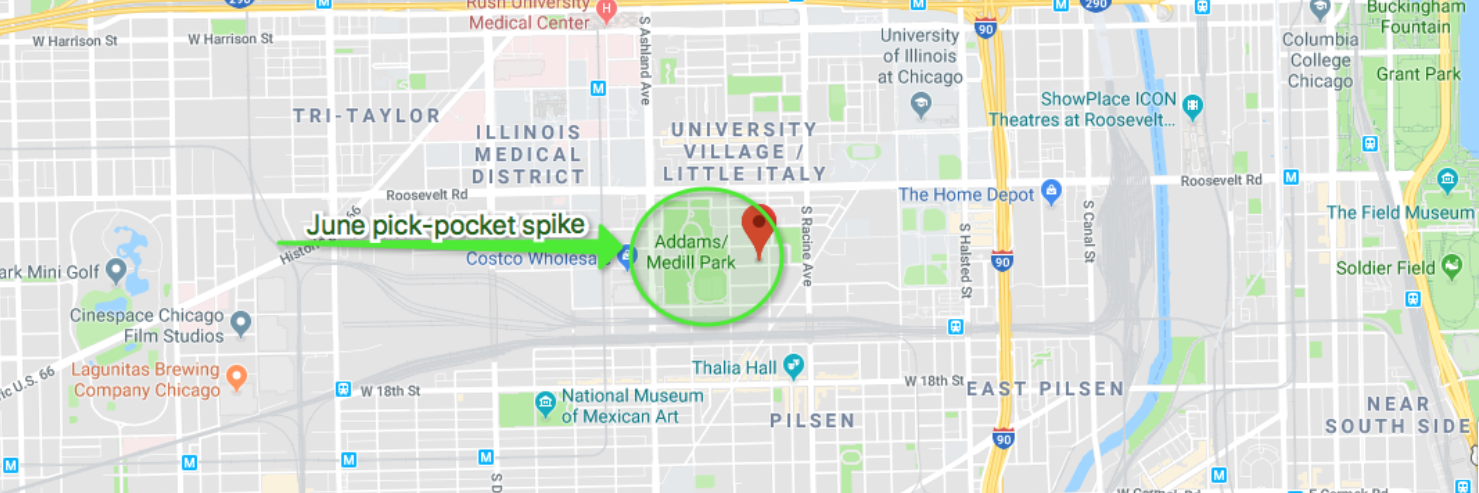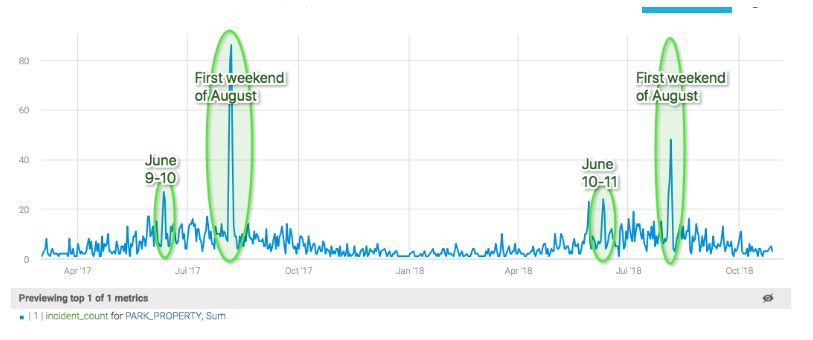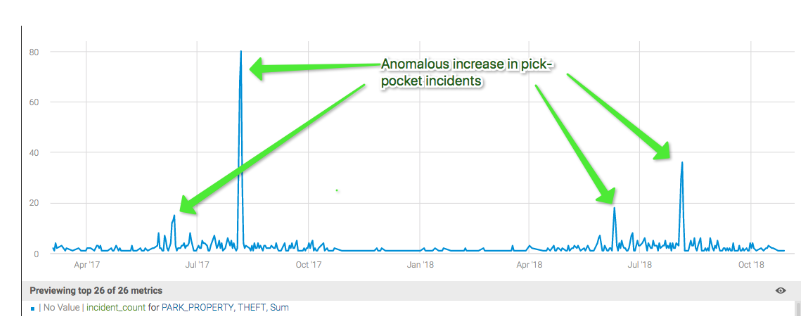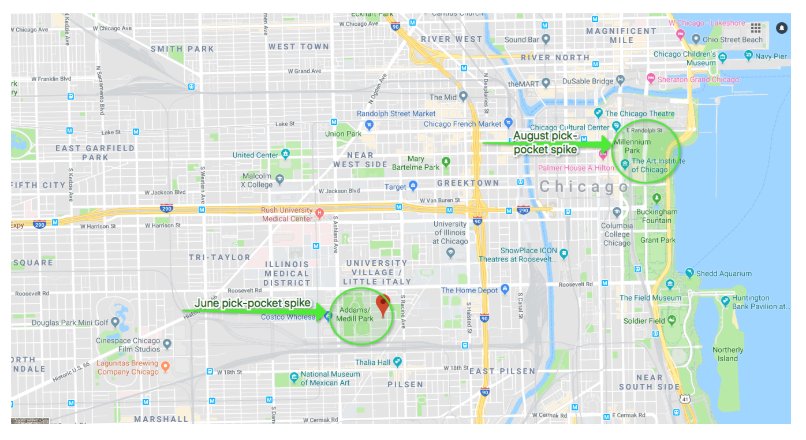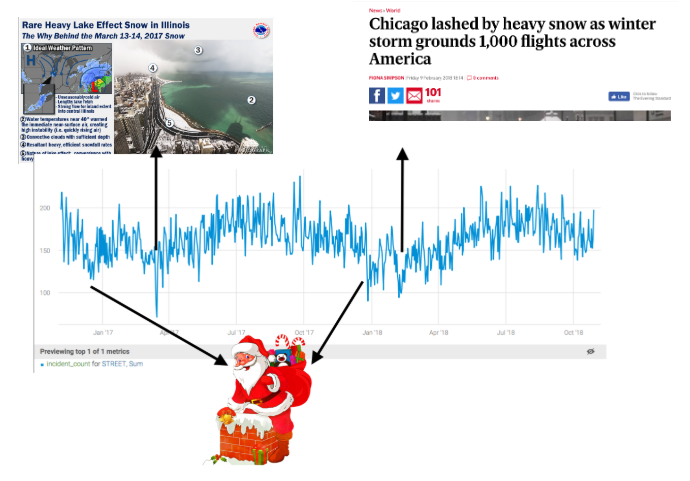When is it safest to visit Chicago parks? To walk the city’s streets? To be a kid? Here are three incredible anomalies I turned up in Chicago law enforcement data.
I love Chicago. I’ve lived in Illinois for five years, and have come to love my visits to the city – the parks, the lake, the architecture, the music, the food, the universities, the people. It’s a city that’s truly unique in the world.
Unfortunately, as we know, Chicago also has crime – and a lot of it. Recently, the city opened to the public all crime reports from 2001 through the open data government initiative. The data includes 6,735,912 incidents to date, and I decided to look for interesting patterns of crimes (that is, anomalies) in this vast data set.
The Data
In this data set, each incident is characterized with multiple (11, to be exact) attributes, along with the time of the incident. For example:
Traditional BI tools would require that I spend days slicing and dicing this data – visualizing it with different combinations of dimensions to find the interesting anomalies I sought. More advanced anomaly detection algorithms can use machine learning and cut this time dramatically. Here’s what discovered in just a few minutes of work.
Anomaly #1: Parks and Crime
The first anomalies I found were related to crimes committed in public parks. Let’s look at what these anomalies tell us about when it’s safest to foray into Chicago’s park district.
It turns out that Chicago parks are safest in the winter. Anyone who’s experienced firsthand the brutality of Chicago winters won’t be surprised by this. There’s also a clear pattern of spikes in park crimes on the weekends (yes, another shocker).
What was surprising, however, were the anomalies I discovered of repeating increase in crime during the first weekends of August and June. And what kind of crimes caused this spike? My system correlated the anomalies in the parks with an increase in theft – and specifically pickpocketing:
Deeper correlation revealed that the spikes in June were in and around Addams/Medill Park, and in August in Millenium Park. The conclusion? If you’re attending summer events in either of these parks, it might be smart to watch your pockets and bags. And to the Chicago police – maybe you should make yourselves more visible in these specific areas during these specific time frames?
Anomaly #2: When are the Streets Safest?
My algorithms discovered four clear periods of crimes marked as “street crimes”. The first two came at the same time of year – Christmas and the days following it. Even the criminals, it seems, feel the holiday spirit.
The other two anomalous crime periods displayed a much more significant drop in street crime. The first spanned three days in March 2017, and the second, a week in February 2018. A quick look at the news for those days revealed the reason: heavy snow. Mother Nature played her part in lowering crime by keeping both victims and criminals at home.
Anomaly #3: Is New Year’s Day the Worst Holiday for Children?
The final anomalies I discovered were perhaps the most surprising, the most mathematically significant, and potentially the most troubling. The algorithms revealed two very large spikes in incidents tagged as offenses against children that happen consistently on New Year’s day.
Does New Year’s day somehow bring out the worst in Chicagoans? I dug deeper into the incidents on these days to see what emerged. While indeed there are many more incidents logged on January 1 every year, almost all them have a timestamp of 00:01 (midnight and a minute). Clearly, it is highly improbable that all of these incidents occurred at the exact same time. A more probable explanation is that the Chicago PD has a procedure that changes the dates of such cases to the first day and hour of the year for open cases. So fear not. I found no evidence New Year’s day is the worst day for children in Chicago.
The Bottom Line
These are just a few small examples of how law enforcement and municipal stakeholders – in Chicago or any city, anywhere – can more effectively fight crime using advanced anomaly detection and machine learning. By adopting the right tools, the complex analyses that are today taking weeks or months can be turned around in near real-time. The end result is the ability to more effectively predict where crime is likely to happen, and more efficiently manage resources to prevent it.
